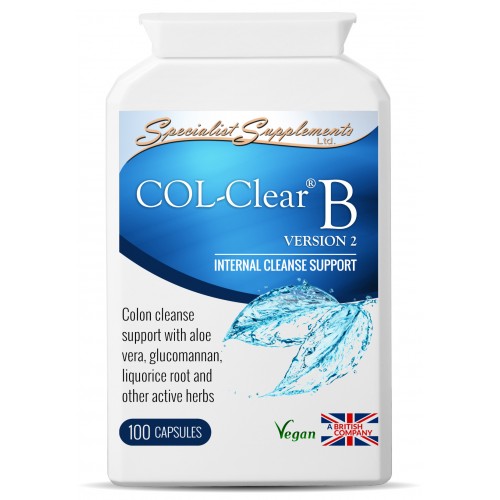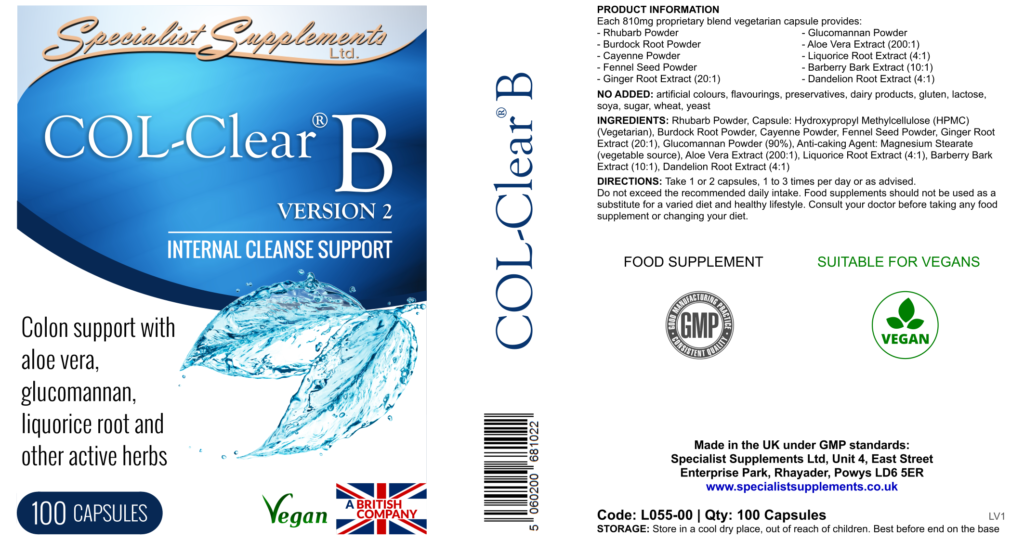Ingredients
Rhubarb:
Widely used as part of colon cleansing programmes, because it contains: anthraquinones , emodin, tannins, flavonoids (including rutin) and several polyphenols. Rhubarb
is a strong herbal laxative, astringent-bitter, gastric stimulant, anti-inflammatory, stomach tonic and antiseptic . It is also used for disorders of the liver, gallbladder and stomach.
Barberry:
Barberry is a natural helper for digestive complaints and also supports the liver, gallbladder and spleen . Its active ingredients are the isoquinolone alkaloids, particularly
berberine . It also has an antiseptic and anti-bacterial effect when taken orally, useful against dysbiosis.. Stimulates bile flow, eases liver congestion and is ideal for an inflamed gallbladder and intestinal inflammation.
Burdock root:
Burdock is one of the most potent tonics of herbalism. It contains a broad spectrum of nutrients, including fatty acids, organic acids, phenolic acids, lignans, sesquiterpenes, tannin, mucilage and inulin (a prebiotic), along with iron, sulphur and B-vitamins. It is widely used to support liver function and as a cleansing botanical.
Cayenne:
This ‘hot’ herb and chilli pepper is rich in vitamins A, B6, C, E, riboflavin, potassium and manganese. It also contains the active ingredient capsaicin , which supports healthy blood flow (and therefore natural detox), a healthy metabolism, digestion, gastrointestinal secretions and acts as an anti-spasmodic for relief of pain and as a carminative.
Ginger root:
Ginger has been used for centuries to support a healthy gastrointestinal tract and efficient digestion . It alleviates occasional gas, bloating and nausea and is known as a ‘hot bitter’ herb which promotes gastric acidity . It is used for many stomach conditions and has anti-inflammatory, carminative, anti-spasmodic, expectorant, vasodilator and circulatory stimulant actions. Gingerol, a compound in ginger, is also a powerful antioxidant.
Fennel seed:
Fennel, traditionally used as a culinary herb, has become a popular component of colon cleansing programmes because it supports the body’s natural elimination of excess waste and toxins from the colon and a healthy acid/alkaline balance . It is also a gentle digestive and carminative herb, used to counteract flatulence, disperse windy colic and alleviate intestinal spasms, griping and irritable bowel.
Aloe vera:
Aloe vera, a spiky, cactus-like plant of the lily family, is best known for its soothing and calming properties. As well as containing 18 amino acids and vitamins (it is a vitamin B12 precursor), it also supports a lower toxic load, acts as an antioxidant and supports intestinal integrity and natural cleansing.
Liquorice root:
Glycyrrhizin is the main active ingredient, which has anti-inflammatory, anti-viral and anti-allergic properties. It is soothing to peptic ulcers and kidney complaints. It also stimulates two steroids, cortisone and aldosterone, which help reduce inflammation. Glycyrrhizin inhibits liver cell injury caused by chemicals and is used in the treatment of chronic hepatitis, hepatitis B and cirrhosis in Japan. It is also used for adrenal exhaustion.
Glucommanan:
A water-soluble polysaccharide that is classed as a form of soluble dietary fibre and is usually derived from konjac root. As such, it is widely used for the treatment of constipation, because it can decrease digestive transit time and is viewed as a “ bulk-forming laxative”.
Dandelion root:
Dandelion is a rich source of vitamins A, C, D and B complex vitamins, as well as minerals such as iron, potassium, and zinc. It has traditionally been used to support
healthy fluid balance in the body and as a natural helper for the stomach and digestive system . It also provides support for the liver and gallbladder, by helping to clear toxins.


